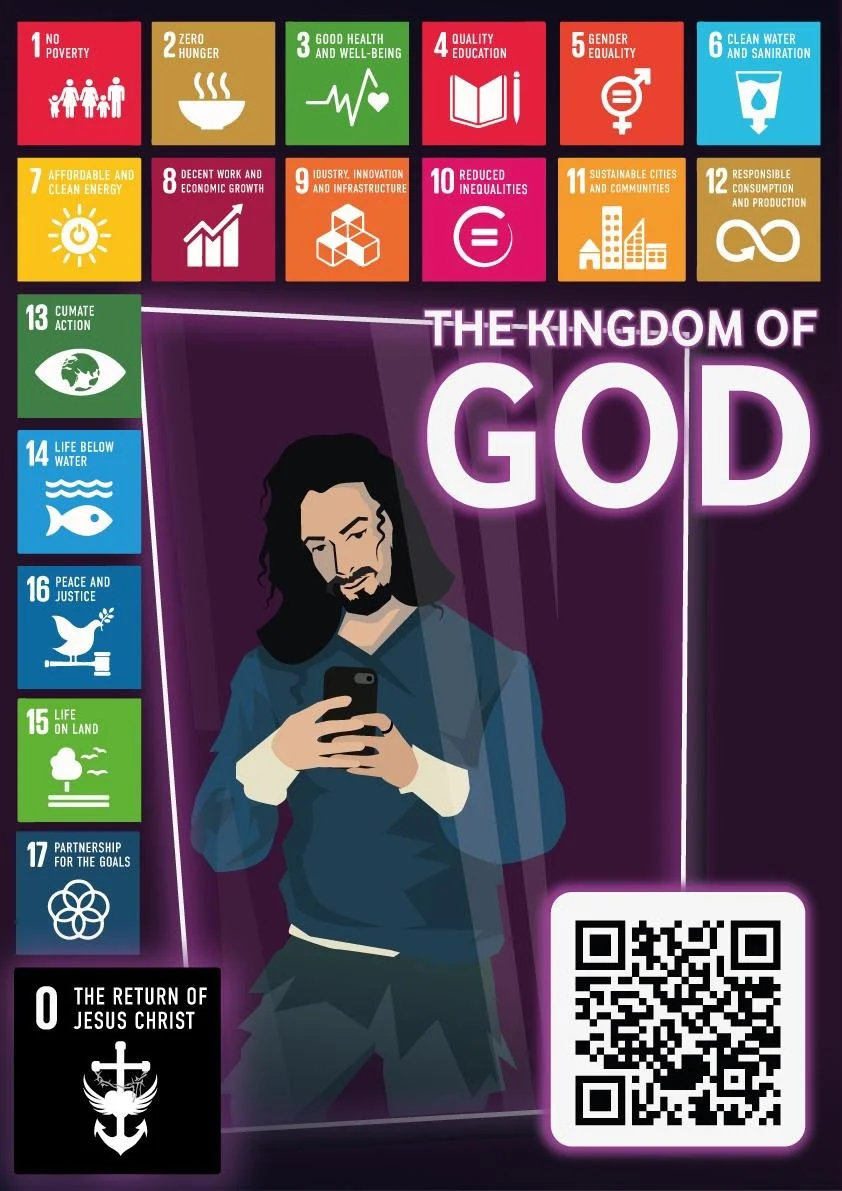
The Future is History
Make it stand out.
-

Dream it.
It all begins with an idea. Maybe you want to launch a business. Maybe you want to turn a hobby into something more. Or maybe you have a creative project to share with the world. Whatever it is, the way you tell your story online can make all the difference.
-

Build it.
It all begins with an idea. Maybe you want to launch a business. Maybe you want to turn a hobby into something more. Or maybe you have a creative project to share with the world. Whatever it is, the way you tell your story online can make all the difference.
-

Grow it.
It all begins with an idea. Maybe you want to launch a business. Maybe you want to turn a hobby into something more. Or maybe you have a creative project to share with the world. Whatever it is, the way you tell your story online can make all the difference.
The History of the Establishment of the United Nations
Origins and Early Development of the United Nations Concept
The United Nations (UN) was established as a result of the devastation caused by World War I and World War II, which led many people to desire an international organization dedicated to maintaining peace. The UN's predecessor, the League of Nations, was adopted shortly after the Paris Peace Conference was convened in January 1919. Although the League ultimately failed to prevent World War II and was officially disbanded in 1946, it provided valuable lessons for the creation of the UN. Franklin D. Roosevelt, recognizing the inherent weaknesses of the League of Nations, saw the value of planning for a stronger international organization that could prevent future conflicts. His administration sought to avoid Woodrow Wilson's mistakes in selling the League of Nations to the Senate by seeking bipartisan support. This approach proved successful as both houses of Congress overwhelmingly endorsed participation in a postwar international organization.
The Atlantic Charter and Declaration by United Nations
The concept of the United Nations began to develop with ideas expressed in the Atlantic Charter in August 1941. This historic document was signed by President Franklin D. Roosevelt and British Prime Minister Winston Churchill during their meeting "somewhere at sea". Rather than being a formal treaty, the Atlantic Charter declared "certain common principles in the national policies of their respective countries on which they based their hopes for a better future for the world". It affirmed basic principles of universal human rights, including the right of every people to choose their own form of government and equal access to raw materials for all nations. The Atlantic Charter created a profound impression on the embattled Allies, coming as a message of hope to occupied countries.
On January 1, 1942, a significant step was taken when Churchill, Roosevelt, Maxim Litvinov of the USSR, and T.V. Soong of China signed a short document that became known as the Declaration by United Nations. The following day, representatives of 22 other nations added their signatures, bringing the total to 26 signatories. These governments pledged to accept the principles of the Atlantic Charter and agreed not to negotiate a separate peace with any of the Axis powers. This document marked the first official use of the term "United Nations," which was coined by United States President Franklin D. Roosevelt. The Allies used this term to refer to their alliance against the Axis powers.
Moscow Declaration and Tehran Conference
By 1943, all the principal Allied nations were committed to working together to create a world where "men in all lands may live out their lives in freedom from fear and want". In October 1943, representatives from the United Kingdom, the United States, China, and the Soviet Union met in Moscow and signed the Moscow Declaration. This document recognized "the necessity of establishing at the earliest practicable date a general international organization, based on the principle of the sovereign equality of all peace-loving States, and open to membership by all such States, large and small, for the maintenance of international peace and security".
Two months after the Moscow Declaration, Churchill, Roosevelt, and Joseph Stalin met for the first time in Tehran, Iran. During this conference, they worked out the Allies' final strategy for winning the war and declared their determination to make a peace that would "banish the scourge and terror of war for many generations". Roosevelt proposed an international organization comprising an assembly of all member states and a 10-member executive committee to discuss social and economic issues. He suggested that the United States, Great Britain, the Soviet Union, and China would enforce peace as "the four policemen".
Dumbarton Oaks and Yalta Conferences
By 1944, many nations agreed that an international organization dedicated to maintaining peace and security was necessary. To define the structure of this new organization, representatives of China, the United Kingdom, the Soviet Union, and the United States met at Dumbarton Oaks, a private mansion in Washington, D.C.. The discussions were completed on October 7, 1944, after which the four nations submitted a proposal for the structure of the new organization to all allied governments.
According to the Dumbarton Oaks proposals, the UN would consist of four principal bodies: a General Assembly composed of all members; a Security Council of eleven members (five permanent and six chosen by the General Assembly for two-year terms); an International Court of Justice; and a UN Secretariat. An Economic and Social Council, working under the authority of the General Assembly, was also provided for. The plan stated that the Security Council would be responsible for helping to prevent future wars, though the actual method of voting was left open for future discussion.
The voting procedure in the Security Council was addressed by Churchill, Roosevelt, and Stalin at the Yalta Conference in February 1945. On February 11, 1945, they announced that the Security Council question had been resolved and called for a Conference of United Nations to be held in San Francisco on April 25, 1945. The purpose of this conference was "to prepare the charter of such an organization, along the lines proposed in the formal conversations of Dumbarton Oaks".
Roosevelt's Death and Its Impact
On April 12, 1945, President Franklin D. Roosevelt died at the age of 63. His death came just before the scheduled San Francisco Conference, raising fears that the conference might have to be postponed. However, President Harry Truman decided to carry out all the arrangements already made, and the conference opened on the appointed date. Before his death, Roosevelt had drafted a speech for the San Francisco conference about his hopes for peace, in which he emphasized the United Nations would play a central role. He had written: "if civilization is to survive, we must cultivate the science of human relationships—the ability of all peoples, of all kinds, to live together and work together, in the same world, at peace".
Roosevelt's death was a significant loss as he had laid the groundwork for the UN and had been a strong advocate for international cooperation to prevent future wars. In the train bearing FDR's coffin back to Washington, Eleanor Roosevelt "lay in my berth all night with the window shade up, looking out at the countryside he loved and watching the faces of the people at stations, and even at the crossroads, who came to pay their last tribute all through the night". Just as crowds had honored Lincoln for saving the Union, they honored FDR for saving democracy and saving the world from dictatorship. Perhaps most importantly for the future UN, he had also "laid the groundwork for the United Nations to prevent another world war".
Influence of Eleanor Roosevelt
Eleanor Roosevelt's contributions to the establishment of the United Nations were pivotal in shaping its focus on human rights and international cooperation. Following the death of her husband, President Franklin D. Roosevelt, she became increasingly involved in international diplomacy and humanitarian efforts, believing deeply in the mission of the UN to foster global peace and protect human rights. Eleanor was appointed as a delegate to the United Nations, where her commitment to human rights was integral to the creation of the Universal Declaration of Human Rights, adopted in December 1948. She presided over the sessions of the Human Rights Commission and played a key role in negotiating the text, demonstrating her exceptional diplomatic skills and dedication to global welfare.
Drawing from her husband’s vision encapsulated in the "Four Freedoms," Eleanor emphasized the importance of safeguarding not only civil liberties but also social and economic rights at the global level. Her advocacy was instrumental in weaving human rights principles into the very fabric of the UN Charter, which committed member states to promote respect for fundamental freedoms and equality among individuals worldwide. In a reflective moment, Eleanor stated that her work on the Human Rights Commission was "the most important task" of her life, underscoring her belief in the interdependence of nations and the necessity for a collective effort in maintaining peace and security.
Eleanor's legacy extends beyond her active participation; she helped to establish the fundamental idea that human rights are universal and must be respected for all—an essence that defines the UN's mission to this day. Through her leadership and vision, she not only honored her husband's legacy but also set a precedent for future generations to prioritize human rights within international relations, ensuring that they remain a cornerstone of global policy.
The San Francisco Conference
The United Nations Conference on International Organization (officially known as the San Francisco Conference) opened in San Francisco on April 25, 1945. Delegates from 50 nations gathered, representing over 80% of the world's population. These delegates were determined to set up an organization that would preserve peace and help build a better world. The conference's main objective was to produce a charter for this new organization that would be acceptable to all the countries.
The conference took place from April 25 to June 26, 1945, and the process of writing the UN Charter took two months. Every part of the charter had to be voted on and accepted by a two-thirds majority. One issue that provoked long and heated debate was the right of each permanent member of the Security Council to veto any resolution passed by the Council. The smaller powers feared that when one of the "Big Five" (China, the USSR, the United States, the United Kingdom, and France) menaced the peace, the Security Council would be powerless to act. Despite these concerns, the great powers insisted on the veto, stating that the main responsibility for maintaining world peace would fall most heavily on them.
On June 25, 1945, the delegates met in the San Francisco Opera House for the last full session of the conference and unanimously passed the UN Charter. The next day, June 26, 1945, in the auditorium of the Veterans' Memorial Hall, the delegates signed the UN Charter, with China, the first victim of aggression by an Axis power, being given the honor of signing first.
The First 50 Member Countries
The original 50 countries that participated in the San Francisco Conference and signed the UN Charter represented a diverse group of nations from around the world. These founding nations included:
Argentina
Australia
Belgium
Bolivia
Brazil
Byelorussian SSR (now Belarus)
Canada
Chile
China
Colombia
Costa Rica
Cuba
Czechoslovakia
Denmark
Dominican Republic
Ecuador
Egypt
El Salvador
Ethiopia
France
Greece
Guatemala
Haiti
Honduras
India
Iran
Iraq
Lebanon
Liberia
Luxembourg
Mexico
Netherlands
New Zealand
Nicaragua
Norway
Panama
Paraguay
Peru
Philippines
Saudi Arabia
South Africa
Syria
Turkey
Ukrainian SSR (now Ukraine)
Soviet Union (now Russia)
United Kingdom
United States
Uruguay
Venezuela
Yugoslavia
Poland, which was not represented at the conference due to the lack of an internationally recognized Polish Government, was later admitted and allowed to be considered an original member, bringing the total number of founding member states to 51.
Official Establishment of the United Nations
The signing of the UN Charter on June 26, 1945, did not immediately bring the United Nations into existence. The Charter needed to be ratified by the governments of the "Big Five" and a majority of the other signatory states. On October 24, 1945, this condition was fulfilled, and the UN officially came into existence. This date is now annually observed around the world as United Nations Day. Four years of planning and the hope of many years had materialized in an international organization designed to end war and promote peace, justice, and better living for all humankind.
The first meetings of the General Assembly, with 51 nations represented, and the Security Council took place in London beginning in January 1946. British diplomat Gladwyn Jebb served as interim secretary-general. The General Assembly selected New York City as the site for the headquarters of the UN. Construction began on September 14, 1948, and the facility was completed on October 9, 1952. The Norwegian Foreign Minister, Trygve Lie, was the first elected UN secretary-general.
The UN Charter and Its Principles
The Charter of the United Nations created a profound and lasting impact on international relations. This foundational document codified the major principles of international relations, from sovereign equality of States to the prohibition of the use of force in international relations. The Preamble to the UN Charter began with the words "We the peoples of the United Nations" and outlined four main purposes: to save succeeding generations from the scourge of war; to reaffirm faith in fundamental human rights and the dignity of the human person; to establish conditions for justice and respect for international law; and to promote social progress and better standards of life.
According to its Charter, the UN aims "to save succeeding generations from the scourge of war,… to reaffirm faith in fundamental human rights,… to establish conditions under which justice and respect for the obligations arising from treaties and other sources of international law can be maintained, and to promote social progress and better standards of life in larger freedom". In addition to maintaining peace and security, other important objectives include developing friendly relations among countries based on respect for the principles of equal rights and self-determination of peoples; achieving worldwide cooperation to solve international economic, social, cultural, and humanitarian problems; respecting and promoting human rights; and serving as a center where countries can coordinate their actions and activities toward these various ends.
Legacy of Roosevelt in the UN's Formation
Franklin D. Roosevelt's role in the creation of the United Nations is often studied separately from his efforts to relieve human suffering in the United States during the Great Depression. However, a study of FDR's New Deal philosophy reveals that he was deeply committed to the protection of human dignity as early as his 1932 presidential campaign. Roosevelt's calls for legislation to protect human dignity and "the security of the men, women, and children of the Nation against certain hazards and vicissitudes of life" were transformed into a call for international protection of such rights. This connection was made explicit in his January 1941 "Four Freedoms" speech, in which he called upon Congress to support his plan for international protection of freedom of speech, freedom of religion, freedom from want, and freedom from fear.
After Roosevelt's death, his widow Eleanor Roosevelt played a crucial role in implementing his vision for the UN, particularly in the area of human rights. From 1946 through 1948, she presided over sessions of the Human Rights Commission in New York, London, Geneva, and Paris. With dedication, patience, firm management, and respect for her fellow delegates, she successfully guided the human rights work through the increasingly fraught currents of the Cold War. This culminated in the adoption of the Universal Declaration of Human Rights by the UN General Assembly on December 10, 1948.
Conclusion
The establishment of the United Nations marked a momentous step in the development of peaceful international relations. This "great alliance," in Roosevelt's words, would guarantee "a true peace based on the freedom of man". By utilizing the effective aspects of the League of Nations and adapting the features that did not work, the Allied nations successfully established a lasting organization to promote peace, justice, and better living for all humanity. Now, more than 75 years later, the United Nations is still working to maintain international peace and security, give humanitarian assistance to those in need, protect human rights, and uphold international law. The UN has also taken on new work not envisioned by its founders in 1945, such as setting sustainable development goals and agreeing to climate action to limit global warming. The history of the United Nations continues to be written as it faces new challenges and opportunities in the 21st century.
